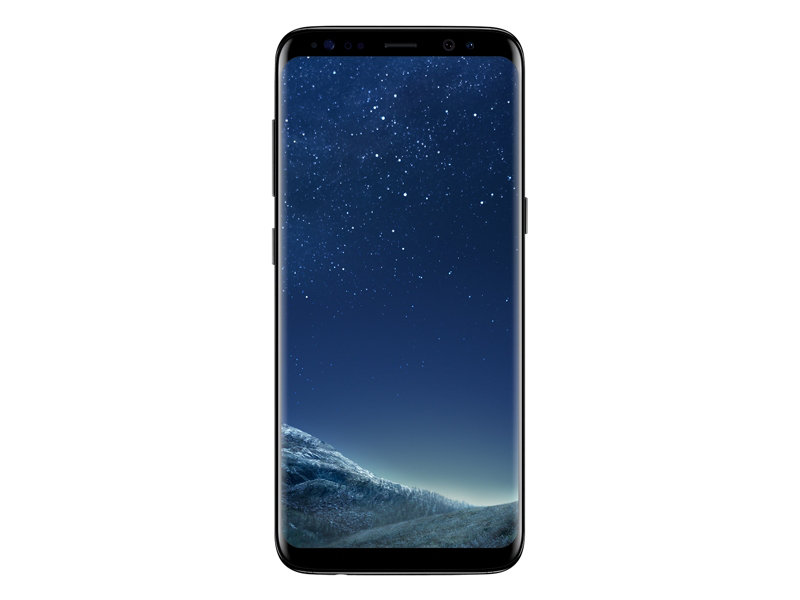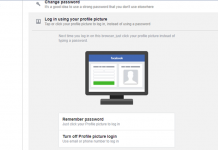Samsung Galaxy S8 and S8 Plus were updated to Android 8.0 Oreo about a couple of weeks ago. At first, Samsung took ages to release the Android Oreo for its 2017 flagship and then the update came with loads of issues. Samsung made sure that the Android Oreo becomes a real pain for its loyal users. I’m quite sure that Samsung has lost a number of its users including me. Those of you who are still sticking to Samsung Galaxy S8 or S8 Plus may want to fix the issues that came up before or after updating your phone to Android Oreo.
Samsung Galaxy S8 is having performance, battery life, installation, network and many other issues after the Android 8.0 Oreo installation. All of the Android Oreo issues can be easily fixed. You just have to apply the right solution to the problem. In this post, I have tried to sum up all the possible issues and their fixes. Have a look at the Galaxy S8 or S8 Plus Android Oreo Problems. The fixes are given right next to the problems.
Contents
- 1 Fix Galaxy S8 or S8 Plus Problems before Android Oreo Update
- 2 Fix Galaxy S8 or S8 Plus Problems after Android Oreo Update
- 2.1 Galaxy S8 or S8 Plus Slow Performance after Oreo Update
- 2.2 Camera Failed on Android Oreo
- 2.3 S8 or S8 Plus Heating Up After Oreo Update
- 2.4 Galaxy S8/S8 Plus Randomly Rebooting after Android Oreo Update
- 2.5 Battery Consumption Problems
- 2.6 Charging Problems
- 2.7 Not Registered on Network Error
- 2.8 How to Wipe Cache on Galaxy S8 or S8 Plus
- 2.9 How to Boot Galaxy S8 into the Safe Mode
- 2.10 How to Factory Reset Samsung Galaxy S8
- 2.11 How to install new stock firmware on the Galaxy S8
Fix Galaxy S8 or S8 Plus Problems before Android Oreo Update
Galaxy S8 or S8 Plus Update Failed Error
There are two solutions for this problem. You can try these solutions one by one.
Clear Cache of your phone
First of all, you can try clearing the cache of your phone. To clear the cache, have a look at these steps.
Fix it using Samsung Smart Switch
- Download and install Samsung Smart Switch on your Windows PC or Mac.
- Connect your Galaxy S8 or S8 Plus to your computer now.
- If your phone asks for any permissions, immediately allow it.
- Now in the Smart Switch, click on More > Emergency Software Recovery > Follow on-screen instructions and perform it.
- Once done, find your phone working again.
Odin flashing failed on Galaxy S8 or S8 Plus
If you trying to manually update your Galaxy S8 or S8 Plus to Android Oreo, you may face the Odin Flashing Failed error. This is because the Odin versions up to 3.12.10 do not support the new format of the firmware files. Samsung is now adding a new .lz4 extension to the .img files in its firmware files. The existing versions of Odin failed to flash the .lz4 files as they do not support this format.
So, in order to flash Android Oreo on Galaxy S8 manually, you have to use the new version of Odin which is the Odin 3.13.1. It’s already available on our site. Have a look at this guide to manually update Galaxy S8 or S8 Plus to Android Oreo without any errors.
No Android Oreo update available for Galaxy S8 or S8 Plus
If your phone is not showing you an update in the OTA update menu, it means the Oreo update hasn’t made it to your region yet. This is because Samsung rolls out the updates in different phases. The updates make their way to specific regions in each phase. You can always download the firmware files from the internet and flash them manually. The same will be done here too. Follow this guide to download Android Oreo and install it on your S8 or S8 Plus.
Fix Galaxy S8 or S8 Plus Problems after Android Oreo Update
Galaxy S8 or S8 Plus Slow Performance after Oreo Update
Galaxy S8 or S8 Plus Android Oreo Problems also include the slow performance issues. The performance of the phone shows a serious lag right after installing the brand new Android Oreo software. This may happen due to a number of reasons. These reasons include a dirty installation of the new firmware. An application which is not compatible with the new Android version can also slow down the phone. Messed up cache partition can be the culprit as well. To fix Galaxy S8 performance issues after updating to Android Oreo, you have to apply the following solutions one by one.
- Clear the cache of your phone. Clearing the cache is the easiest solution which will work in most of the cases. If clearing cache fixes the cache of your phone, you will save a lot of trouble.
- Boot your phone into Safe Mode and check if an application was pulling the performance of your phone down. Applications can make your phone crash because of compatibility issues.
- Perform a factory data reset to refresh everything on your phone. Before trying to factory reset, do not forget to try the above two solutions.
- If all the 3 solutions given above fail to work, go ahead and perform a new clean installation of the Android Oreo firmware.
Camera Failed on Android Oreo
Camera Failed is a very common error for the Galaxy S8 owners who just updated to Android Oreo. There are several fixes for this issue. Here’s what you can do to fix this Galaxy S8 or S8 Android Oreo problem.
- Go to Settings > Apps > All Apps > Camera > Storage > Clear Cache and Data. Restart the phone now. Open the camera and check if it’s working or not.
- If the first solution doesn’t work, try clearing the cache of your phone.
- If clearing cache doesn’t work, try factory resetting the phone.
- Factory reset did not work either? Try installing a third-party Camera application from the Play Store.
- If it still fails to work, you will have to take your phone to a service centre to get it checked for a hardware issue.
S8 or S8 Plus Heating Up After Oreo Update
Your S8 can heat up after Android 8.0 Oreo installation because of the following reasons.
- The installation didn’t go well, or you did not perform a clean installation.
- The cache partition is not working fine.
- Your Galaxy S8 has an application which is eating a lot of memory and heating up your phone.
How to fix?
Try these solutions one by one.
- Clear the Cache of your phone.
- Boot into Safe Mode to find out if an application is heating it up.
- Factory reset your phone.
- Install a clean firmware.
Galaxy S8/S8 Plus Randomly Rebooting after Android Oreo Update
A number of users reported this issue immediately after they updated their phone to Android Oreo. Just like the heating up and performance issues, this issue can also happen because of the similar reasons. You can clear the cache of your phone to fix it. If clearing cache doesn’t help, you can boot into Safe Mode to fix it. The last resort should be to flash a new firmware on your phone with the help of Odin.
Battery Consumption Problems
After updating your phone, the battery needs to be calibrated once again. To do so, you need to charge your phone to 100% first of all. After charging it to 100%, you need to let it drain to 0%. Do not charge your phone in between. Make sure that it comes to 0 from 100 without charging it in-between.
Repeat the same cycles for 3 or 4 times to fully calibrate the battery of your phone on the new firmware. This should fix the battery consumption issues on your phone.
If you think that there’s another issue with the battery, you can try clearing cache or booting into the Safe Mode to check if an application is eating the battery of your phone.
Charging Problems
Is your phone charging slowly after the Android Oreo update? This may or may not be a software related issue. Here are the possible fixes.
- Always use original charger to charge the phone.
- Use the OEM data cable to connect your phone to the charger.
- Do not expect a Laptop or your Car to charge the phone as fast as the original charger does.
- Calibrate the battery of your phone immediately after updating to a new firmware.
Not Registered on Network Error
Network issues have several fixes. Here’s what you can do to fix Note Registered on Network Error on the Galaxy S8 after Android Oreo update.
- Make sure that you are using appropriate SIM card and it’s properly inserted. Faulty SIM card will give this error.
- Check if the Flight Mode is turned off or not. If it’s on, then you need to turn it off.
- You can also try turning on the Flight Mode and then turn it off again.
- On your phone, go to Settings > About > RESET > Reset Network Settings > Reset all the settings. Reboot your phone.
How to Wipe Cache on Galaxy S8 or S8 Plus
- Turn off your phone completely.
- Now turn on your phone while pressing the Volume Up + Bixby + Power keys simultaneously.
- As soon as your phone boots up, let the keys go.
- Your phone will not take a few minutes to get into the recovery mode.
- Once you see the recovery screen, use Volume Down to highlight Wipe Cache Partition.
- Now press Power Key and wipe the cache partition.
- Reboot the phone now.
- Check if the concerned issues have been resolved or not.
How to Boot Galaxy S8 into the Safe Mode
- Turn off your phone completely.
- Now turn on the phone.
- As soon as you see the Samsung logo on the screen, press the Volume Down key.
- Keep the Volume Down key pressed unless the phone takes you to the home screen.
- Once on the home screen, leave the Volume Down key.
- You should now find a Safe Mode watermark on the lower left corner of the screen.
- This means all the third-party apps have been disabled. You can now run your phone for the concerned issue.
- If you find your phone working absolutely fine in the Safe Mode, it will mean that an application is causing trouble for your phone’s performance, battery life or its temperature.
- Boot into normal mode now and uninstall your recently installed apps to find out the culprit.
How to Factory Reset Samsung Galaxy S8
- Backup all of your data before factory resetting.
- Boot into the recovery mode of your phone just like you did for wiping its cache.
- In the recovery mode, highlight and select wipe factory data.
- Perform the factory data reset now. Restart your phone once done.
- Everything on your phone will be back to its factory state now. That’s all.
How to install new stock firmware on the Galaxy S8
At times, the installation of new firmware on our phone doesn’t work properly. In such cases, we have to install a new and clean firmware. Clean installation means you have to perform a factory data reset before installing or flashing new firmware. In the case of Android 8.0 Oreo for the Galaxy S8 or S8 Plus, the best choice is to perform a clean installation. You may face a lot of issues if you are just dirty flashing the Android Oreo.
To perform a clean installation of the Android 8.0 Oreo, factory reset your phone and then follow this guide to install new Android Oreo on your Galaxy S8 or S8 Plus.















